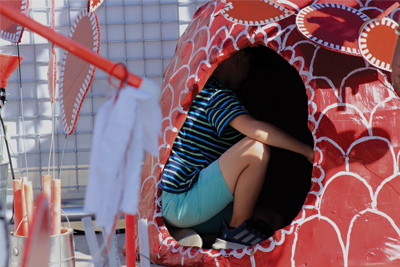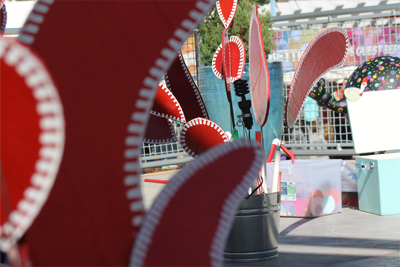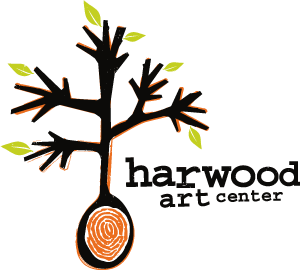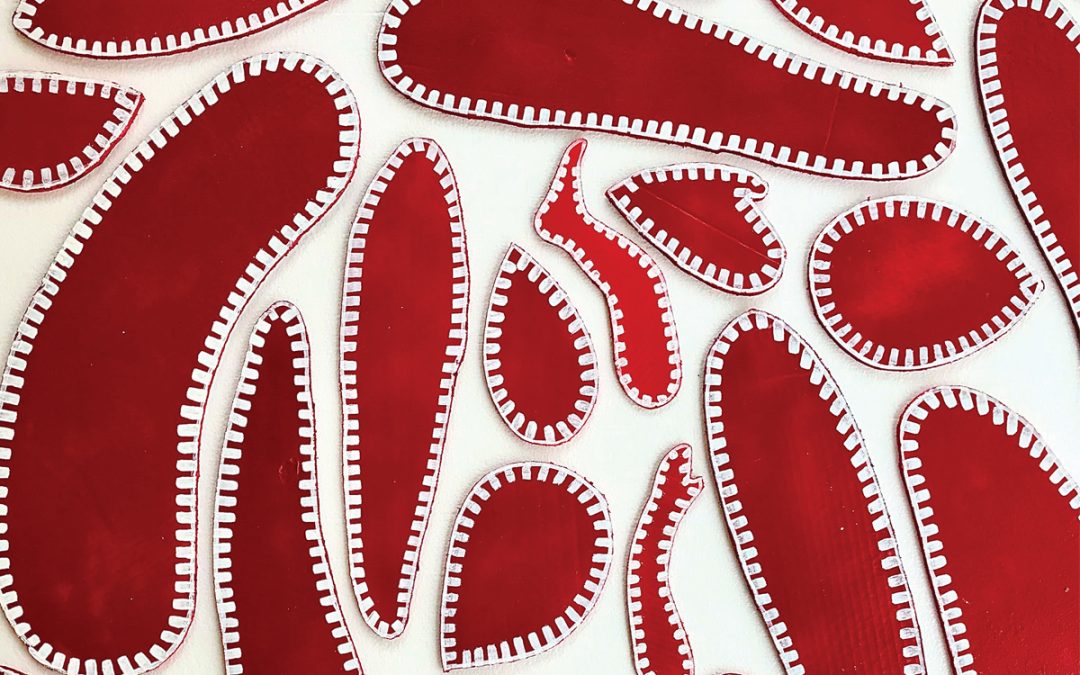Artist Talk: Friday, January 10 @ 5:30pm
Opening Reception: Friday, January 10, 6 – 8pm
Exhibition Runs: January 10 – 30, 2020
Electric Desert is a fluorescent nightscape of glittering cacti and flitting ghosts. Guilds of cardboard piñon, cholla, and nopales invite visitors to play with, build with, and sing with simple robotic constructs that gently open complex questions about the land and peoples of our Southwestern borders.
Fearnside’s installation uniquely incorporates creative approaches to knowledge production, community engagement, media and art-making practices. Electric Desert’s function is to spark the imagination and to use interactive play-scapes to deeply consider the Sonoran desert’s cultural and biological complexity. The project merges Fearnside’s practices in zine-making, immersive installations, and community-building with big intentions.
For so many reasons, intense conflict and emotional heaviness characterize most conversations related to the Southwestern border. Using colorful trash, artificial life, and immersive sound, Electric Desert sparks a playful, body-based and trauma-conscious discussion of some of the most deep and abiding issues in our 21st century.
“I make images and immersive experiences that use texture and color to explore relationships: shape and edges, harmony and disharmony, novelty and stability. My images arise from a drawing-based form-making language involving photography, layer-building and visual friction. I often focus on portraits, and thus on stepping into the mysteries of the psychological world. I owe much to artists of the Expressionist lineage, from Kokoschka to Neel; like them, I value the irrational and the absurd, play and intuition as modes of thinking and research, and paradox and complexity over the obvious answers. I make art to understand. I make art to ask questions.” – Andrew Fearnside
Andrew Fearnside is a New Mexico painter guided by ongoing interests in psychology, social justice, pop culture and spiritual life. After completing a BFA in painting and drawing at the School of the Museum of Fine Arts in his native Boston, he made paintings and performances and found work as a designer, dancer, teacher and psychotherapist. In Albuquerque, he has shown at Tortuga Gallery, the Open Space Visitor Center, and Page Coleman Gallery. He has been juried into group shows in Colorado, Texas, Michigan, and Oregon, and has won awards for his work. He has had solo shows at Zendo, Winning Coffee, and the Erna Ferguson Library in Albuquerque

Andrew Fearnside, Electric Desert SOMOS, mixed media, 2019

Andrew Fearnside, Electric Desert SOMOS, mixed media, 2019
Further Thoughts on Electric Desert
The Electric Desert merges graphic design, installation, and community engagement processes to reflect on the complex relationship between the land and peoples of the US’s Southwestern borderlands.
The Electric Desert uniquely incorporates creative approaches to knowledge production, community engagement, media and art-making practices. Its function is to spark the imagination and to use interactive play-scapes to deeply consider the Sonoran desert’s cultural and biological complexity. The project merges my practices in zine-making, immersive installations, and community-building with big intentions.
For so many reasons, intense conflict and emotional heaviness characterize most conversations related to the Southwestern border. Using colorful trash, artificial life, and immersive sound, Electric Desert sparks a playful, body-based and trauma-conscious discussion of some of the most deep and abiding issues in our 21st century.
Andrew’s plan is to transform the Electric Desert into a traveling exhibit made for art, children’s, and natural history museums. The exhibit will feature a nighttime desert environment comprised of artificial Sonoran flora — saguaros, cholla, ocotillo, nopales — modularly built from recycled materials. The scene will be lit with colored lights and will be home to robots — horny toads, crows and the elusive jaguar — that incorporate sensors and algorithms to sense and respond to visitors. While otherworldly and immersive, the environment will hint at ecological and cultural issues experienced on the Southwest border. A range of activities and programs activate the exhibition.
Fearnside’s next step with Electric Desert is to find a residency in Arizona’s border desert, where he can draw Sonoran flora and fauna while interviewing residents of the area about their relationships with land and immigration. He will be embarking on that process in the opening weeks of 2020. He plan to move from site-based research characterized by writing, illustrating and publishing original zines, to the re-design and production of a traveling large-scale immersive installation.
Influences
He found Butoh dance at 16; its emphasis on embodied imagination is rooted in his bones. In college he encountered postcolonial theory through Marxist-influenced anthropologists. Work as a counselor deepened his practice of professional ethics, loosened his attachments to theory, and renewed his view of creativity. As a practice and post-Enlightenment view of ecosystems, permaculture is a pillar of my creative process.
His aesthetics are informed by illustrators: Tomi Ungerer, Tadanori Yokoo; by painters like Hope Gangloff and Taylor McKimmens; and by designers like Issey Miyake and Stella Jean. Meow Wolf’s highly lucrative blend of street and gallery was like rocket fuel for his imagination.

